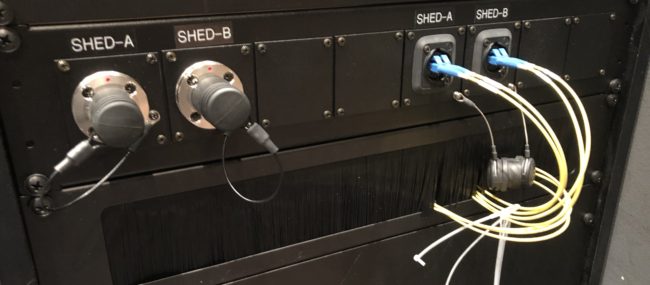We’ve been dreaming for quite a while about how to bring our Lakeside Auditorium system into the world of HD. But with all things good, time, money, and creativity are required! In looking at our options compared with long-term budget forecasting, we came up with a great in-between solution. Our Main Auditorium is equipped with Hitachi SK-HD1200 SMPTE fiber cameras. That got us thinking – we’ve got the infrastructure in place already in Main – how can we use what we already have but use the HD cameras in Lakeside yet still have CCU control and ability to switch from the Ross Acuity switcher in the Main Auditorium. Our research brought us to a “throw-down box” solution to convert SMPTE fiber into single-mode fiber. This magical box is known as a SHED (SMPTE Hybrid Elimination Device).

SHED: Added Flexibility for Video over Fiber
SHED extends the transmission distances of HD cameras limited by hybrid copper/fiber cable up to 10km using two single-mode fibers. It allows us to use the SMPTE cameras anywhere there is a pair of single-mode fibers on campus. This provides extreme flexibility for an excellent HD capture with full CCU control, tally, coms, etc. After consulting with some of our outside integration specialists – we learned that we could make our own SHED by purchasing the key components and deploying them in our venues. This saved the ministry money and moved us quickly into an HD capture scenario.
Here is what we purchased:
We racked all of the purchased gear and connected the LC of the breakout cable to the back of the opticalCon chassis. In order to power the cameras, we put a local power supply unit at the base of the camera location, making sure to adjust the CCU settings to not send power (hybrid/single mode setting) to the camera. Then we patch all of the SMPTE lines from the camera to the SHED and the LC single-mode fibers back to our video core location.
This workaround has enabled us to capture a conference and our Wednesday night services in HD. The only downside to the system is that it is only operable when the Main Auditorium isn’t holding an event – which happens once a week. All in all, this system has enabled us to take a leap forward in quality on a minimal budget.
